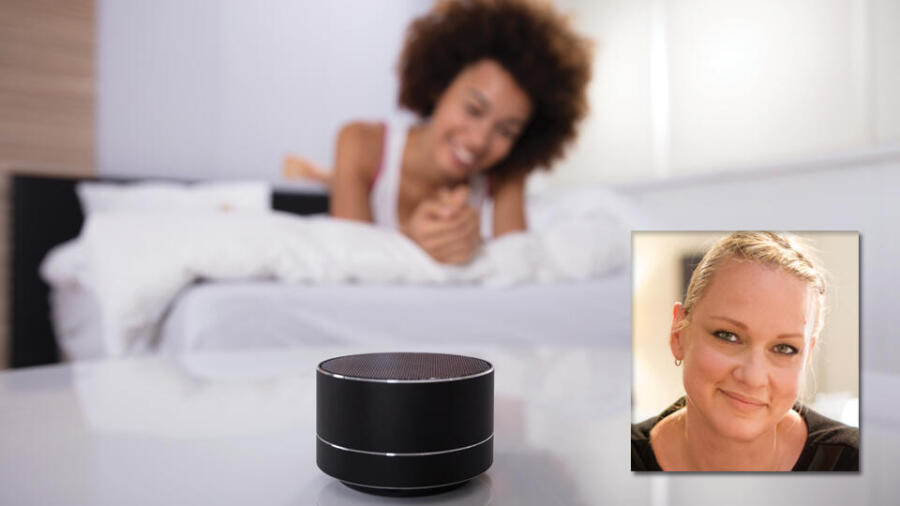I conducted a little experiment the other day using my mobile phone. Pressing the microphone on the Google Bar I asked, “Where can I find the best vibrating anal toys?” Instead of seeing a list of local adult retailers, a variety of news aggregation sites like Cosmo, Huffington Post, Refinery 29, and Bustle popped up. These websites, as well as Amazon (no surprise there), dominated the first couple pages. There was a sprinkling of well-known sexual wellness brands at the top, but this was a result of their Google AdWords campaigns. Not one local sex toy retailer popped up.
Thinking it was a fluke, I tried searching for vibrators, clitoral stimulators and dildos using that same natural tone and question with Siri on an Apple iPad and Alexa. Once again, the results were astoundingly similar. No adult shops or e-comm sites showing my query — but a lot of helpful articles on how-to-use sex toys.
As an adult marketer, I am always searching for trends in the ever-shifting digital marketing landscape. So, why was typing versus talking creating such a wide gap of information?
I discovered with this experiment that adult retailers and websites have an opportunity to be both seen and heard in 2020, and beyond, simply by adopting voice recognition technology and integrating it into a marketing plan.
‘Hello, Is It Me You’re Looking for?’
Edison Research states that there are “more than 53 million Americans who own smart speaker devices with an estimated 55% of homes having either an Amazon Echo and Google Home by 2022.” The current statistics show that by 2020 there will be 1.6 billion digital assistants, with adults using voice search at least one time a day. That’s a lot of searches! Basically, voice search and smart devices are growing at an exponential rate which means a lot more customers will be looking for things they want to buy simply by using their voice.
Defining Voice Search
Steve Jobs once said his “ambition was to get rid of the keyboard.” It looks like this is becoming true. Voice search was initially introduced by Google in 2011. However initial users looked at this technology more as a novelty than a reliable feature that shoppers could trust. Unlike manually typing a query in the search bar, voice search uses speech recognition technology that lets users shop for products, information or services simply by saying what they want out loud. Even our televisions and remotes have this capability in finding content that is relevant to our search.
Reach Out and Touch Someone
I remember the good old days when you “let your fingers do the walking,” as was the Yellow Pages tagline. The big yellow book offered a level playing field for all types of businesses, especially adult novelty shops. Back in those days, if your store was not listed, you simply did not get noticed. Oh, how far we’ve come!
A digital realm is a place where we all live and shop, and significant innovations such as voice search are changing the way we navigate the internet. Because we live in a world of instant gratification, voice search makes finding a local retailer and websites even more convenient for the end-user. One push of a button and you are instantly presented with options without having to lift a finger to type.
To capitalize on its rapid rise in popularity, adult marketers and sexual wellness retailers will need a different approach compared to other marketing channels. You will need to not only be seen but also heard in the ever-so-choosy environment of what is now called the digital assistant. Unlike traditional search, where first-page ranking is great, for voice search, however, being at the top means you’re head and shoulders above your competitors.
Preparing for the Voice Search Revolution
Optimizing for voice search is critical for all types of businesses, but is even more essential for adult retailers and brands that operate in a physical space. On-the-go shoppers are looking for quick information. By understanding the intent and how voice search differs from text search, your brand will be well poised for the fastest-adopted consumer technology.
Here’s how your brand can stand out among the crowd.
Accurate Information
To be on the coveted lips of Alexa, Siri or Google Assistant or any other (future) smart speaker, it is essential that your business name, address, phone, website and hours of operation be completely accurate. Make certain you update your information with special holiday hours or upcoming events. Since voice search is a hands-free alternative for those on the go, most customers will scan your Google listing without even clicking the website link. Adding “near me” in the title tags, meta descriptions, and anchor text is also a great way of driving customers to your front door.
Play Up Your Customer Reviews
If you don’t already, encourage your customers to leave feedback and a positive review of their experience and product selection. If someone leaves a negative review, make sure you respond to them in an effective and non-emotional manner. Show customers that you are invested in them whether it’s positive or negative.
Naturally Speaking
We all know the importance SEO plays when it comes to getting your business and website seen. Having a well-optimized site in the traditional sense is great for typed queries but not really when it comes to a digital assistant.
To be heard, your content should be well-organized and sound like a warm and authentic natural conversation. One of the best ways of getting heard is by creating quality content that answers people’s questions and solves their problems using concise natural language. You can also add bullet points or step-by-step how-to guides that help solve problems. Using the tenents of “how,” “when,” “where” is a great place to start with your content.
You may also want to consider creating and adding FAQs or a “Brand 101” page that uses a natural conversational voice. This is a great opportunity to be featured in voice search results.
SEO Best Practices
Voice search is an exciting new chapter in SEO and both are intimately connected. SEO is the science of ordering search results based on the relevance of a specific article to a search query. Voice search uses the same principle to find the most relevant answer. But here’s the catch — when a customer searches using text, they may or may not click on the first result. So even if your site lands on position 10, you still get clicks. However, with voice search, the outcomes are way different with only a few results at the top. And whoever is highest is the clear winner.
The reason for the gap is the way customers speak through a digital assistant is more conversational than typed keywords. Due to the conversational way users address their voice-enabled devices, the average voice search query is three to five words longer than the average text query.
For instance, a customer may type in “anal sex toys,” but with a voice query, they are more likely to say, “How do I use a beginner’s anal sex toy?” The results are starkly different and it all comes down to how your site is optimized.
If you want a top rank in voice search results, you will need to consider and anticipate long-tail keywords that customers will be saying. Long-tailed keywords are in line with what voice searchers are looking for. If you ignore voice search SEO, you are not only jeopardizing the future of your brand in the digital marketplace but also neglecting 50% percent of people using voice to look for what you’re offering.
The Mobile Experience
I once heard someone say, “If you want to really get to know someone better, be around them when there is a slow internet connection.” When conducting my experiment with voice search, I came across a number of mobile websites that took forever to load — and forever in my world is more than five seconds. The reality is the longer your site takes to load, the less connection you make with a potential customer. In fact, for every one-second delay in a mobile website’s load time, conversion decreases by 15%. That’s a huge issue for a brand especially as voice search becomes more dominant.
I predict that voice search will revolutionize the way we shop and how we gather information or connect to the things that make life more pleasurable — just like Google did when it was first launched. There are so many possibilities with this technology. It’s like having a tangible and instant gratification in the palm of your hand. What this also means is that companies will have to invest in making sure their brand is heard loud and clear — if not, you may be weeded out of the search result and no one will hear a peep at how great you really are.
Angela Lieben is the marketing and public relations manager for Liberator.








